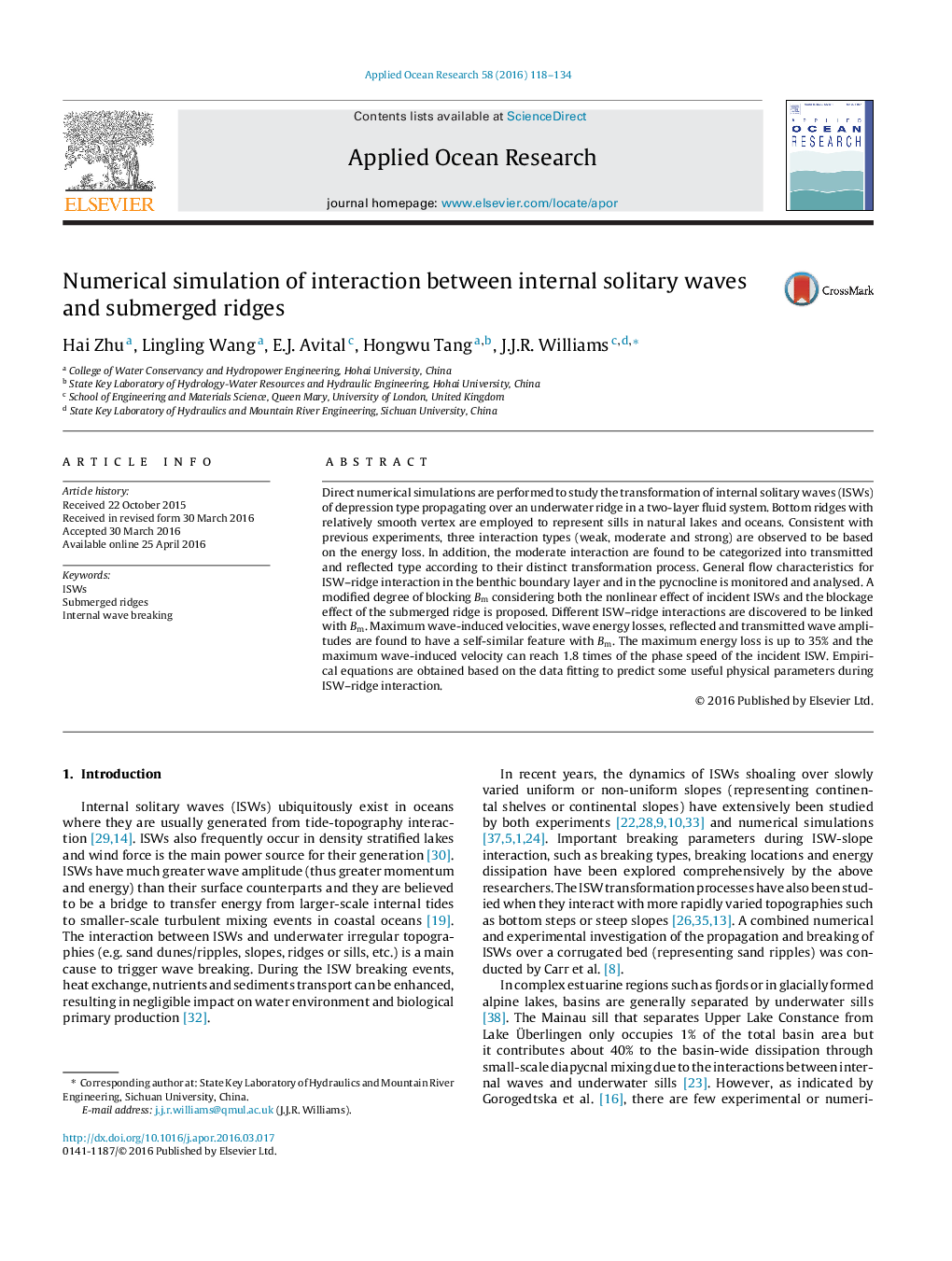| Article ID | Journal | Published Year | Pages | File Type |
|---|---|---|---|---|
| 1719741 | Applied Ocean Research | 2016 | 17 Pages |
•Detailed interaction types (weak, moderate and strong) are observed and analysed.•A modified degree of blocking Bm including nonlinear effect is proposed.•Maximum energy loss for ISW–ridge interaction can be as high as 35%.•Important parameters have self-similar characteristics when described by Bm.•Empirical equations are proposed to predict key hydrodynamic variations.
Direct numerical simulations are performed to study the transformation of internal solitary waves (ISWs) of depression type propagating over an underwater ridge in a two-layer fluid system. Bottom ridges with relatively smooth vertex are employed to represent sills in natural lakes and oceans. Consistent with previous experiments, three interaction types (weak, moderate and strong) are observed to be based on the energy loss. In addition, the moderate interaction are found to be categorized into transmitted and reflected type according to their distinct transformation process. General flow characteristics for ISW–ridge interaction in the benthic boundary layer and in the pycnocline is monitored and analysed. A modified degree of blocking Bm considering both the nonlinear effect of incident ISWs and the blockage effect of the submerged ridge is proposed. Different ISW–ridge interactions are discovered to be linked with Bm. Maximum wave-induced velocities, wave energy losses, reflected and transmitted wave amplitudes are found to have a self-similar feature with Bm. The maximum energy loss is up to 35% and the maximum wave-induced velocity can reach 1.8 times of the phase speed of the incident ISW. Empirical equations are obtained based on the data fitting to predict some useful physical parameters during ISW–ridge interaction.
